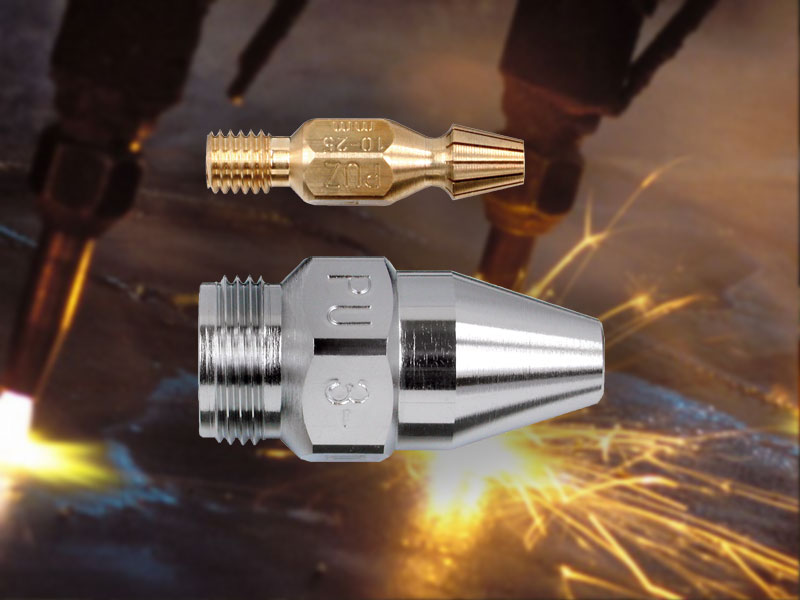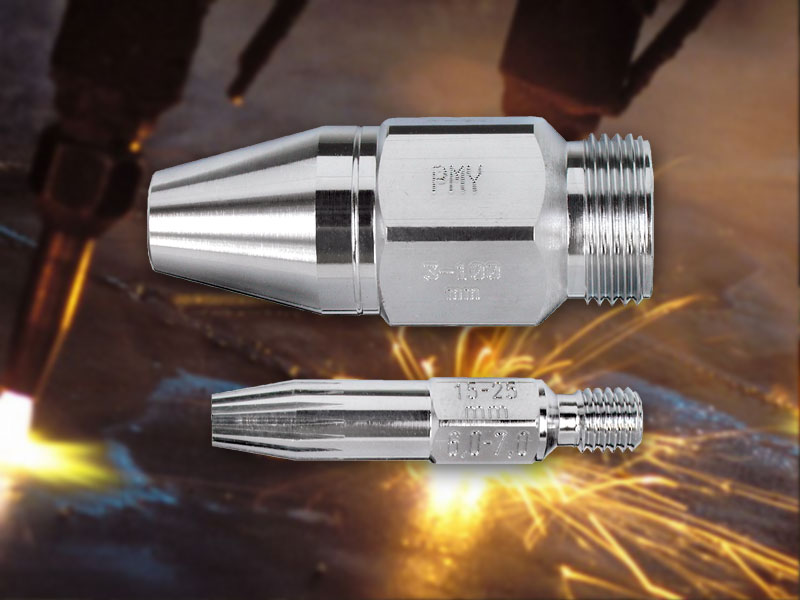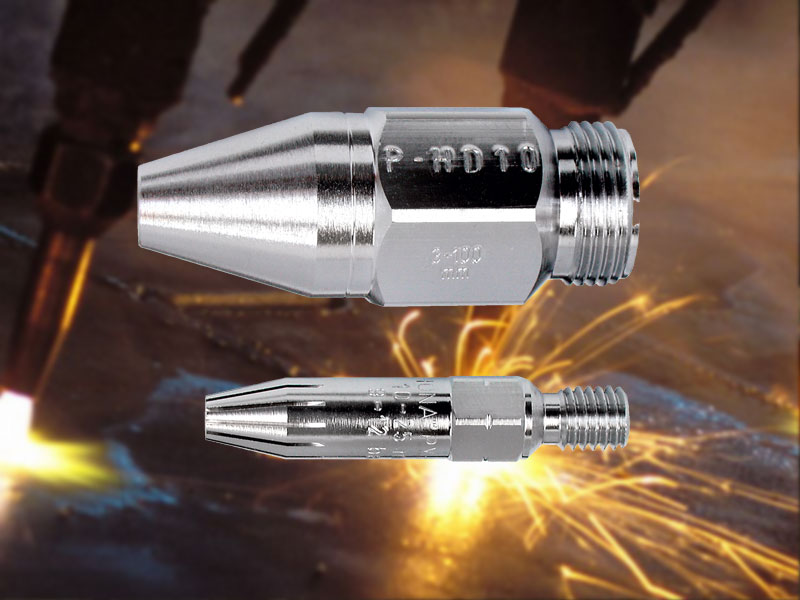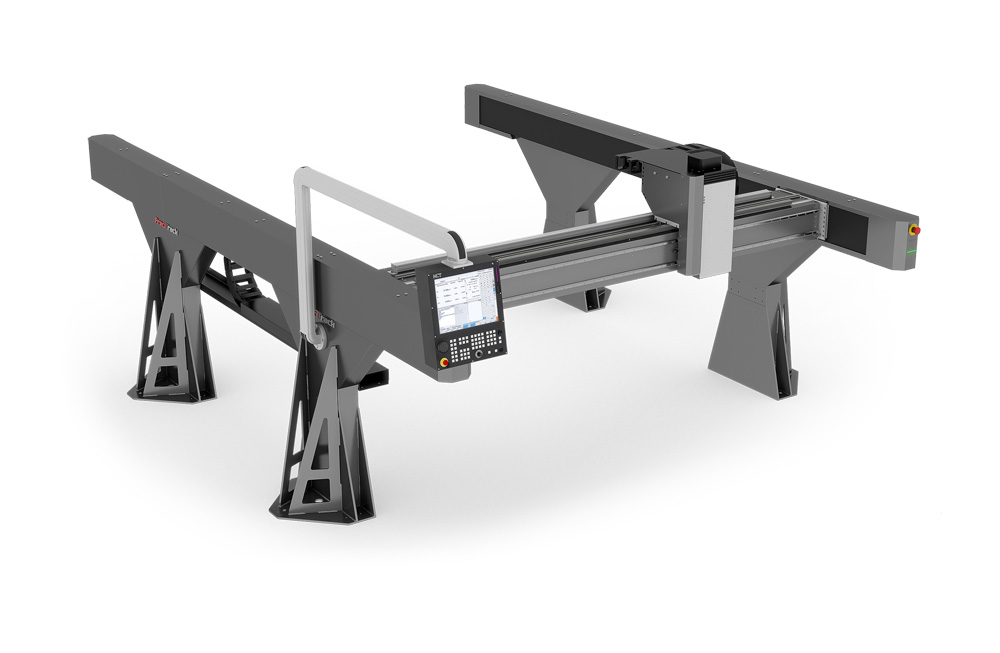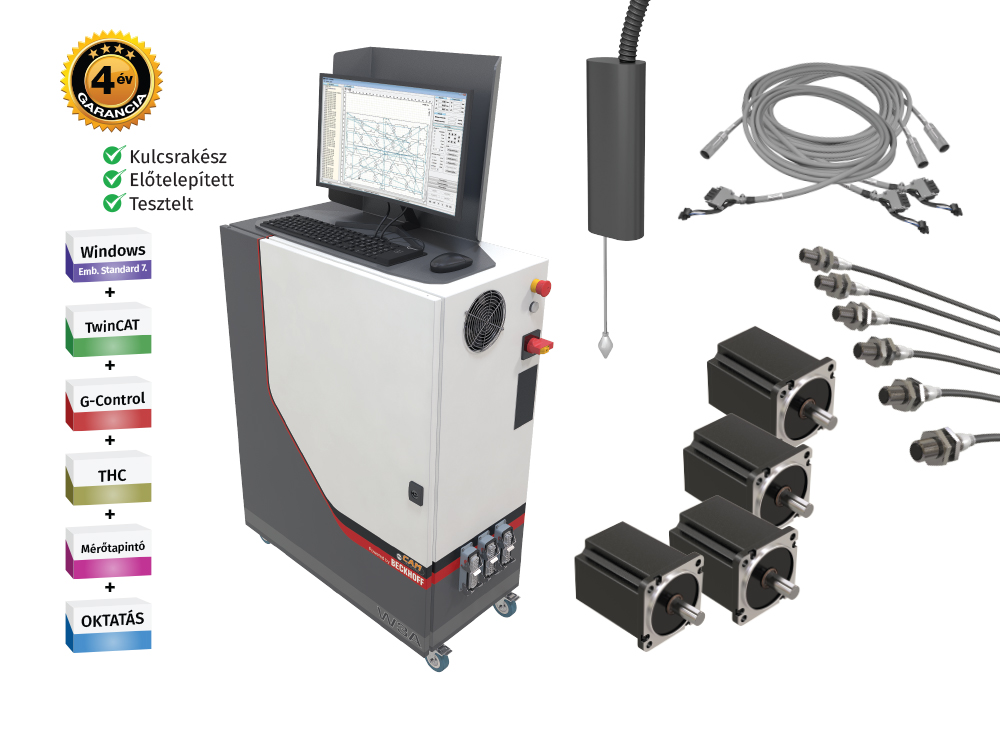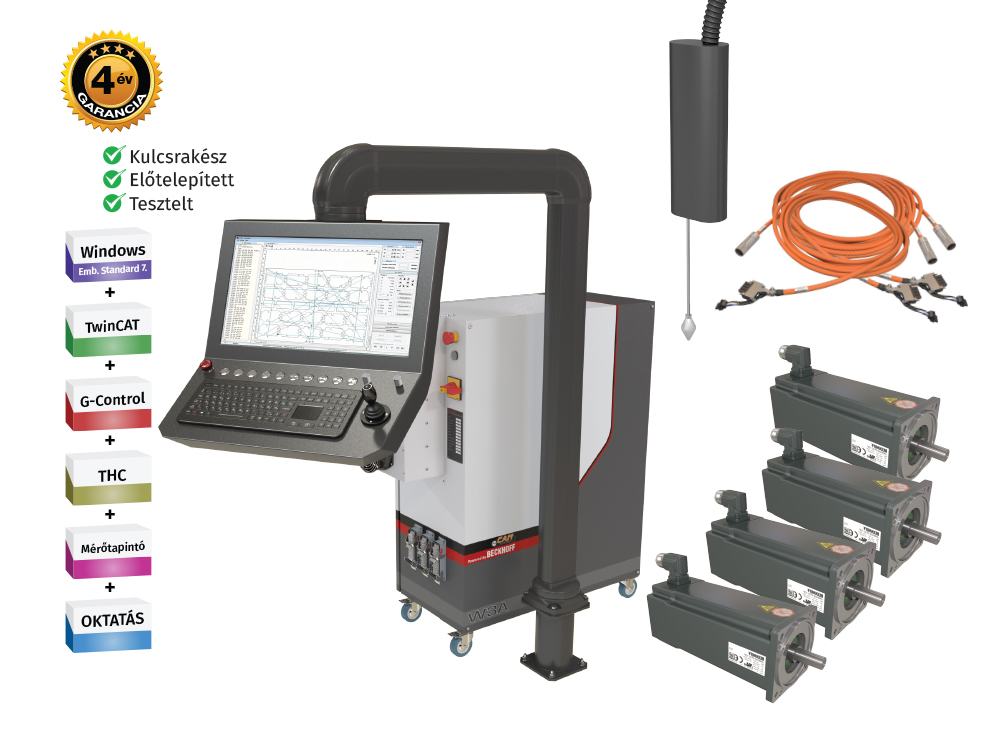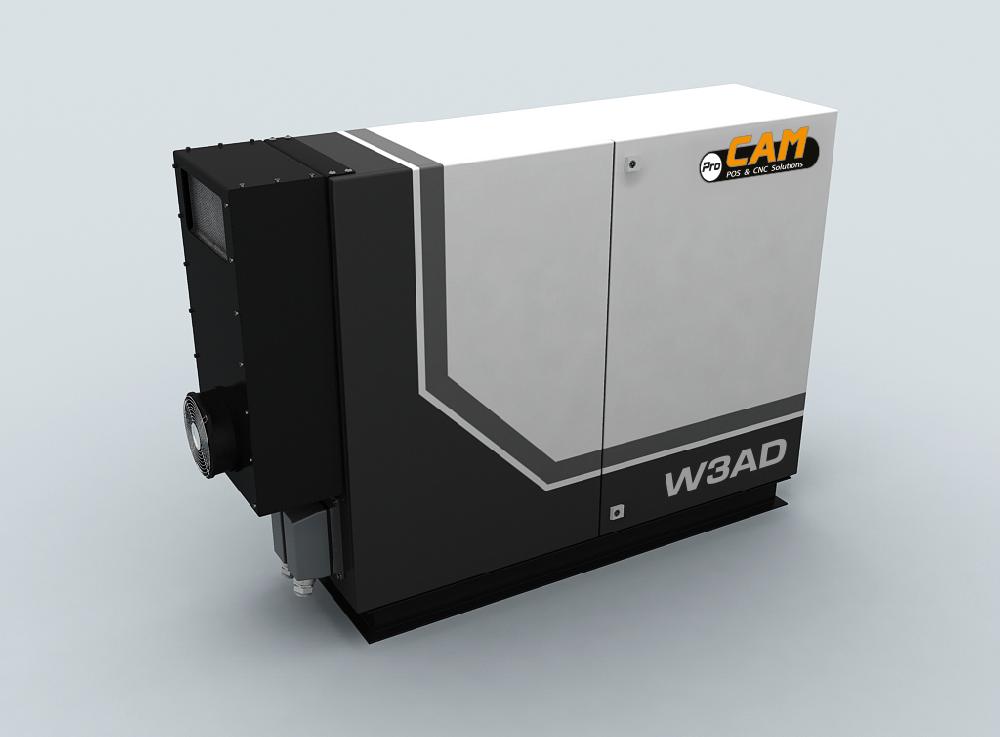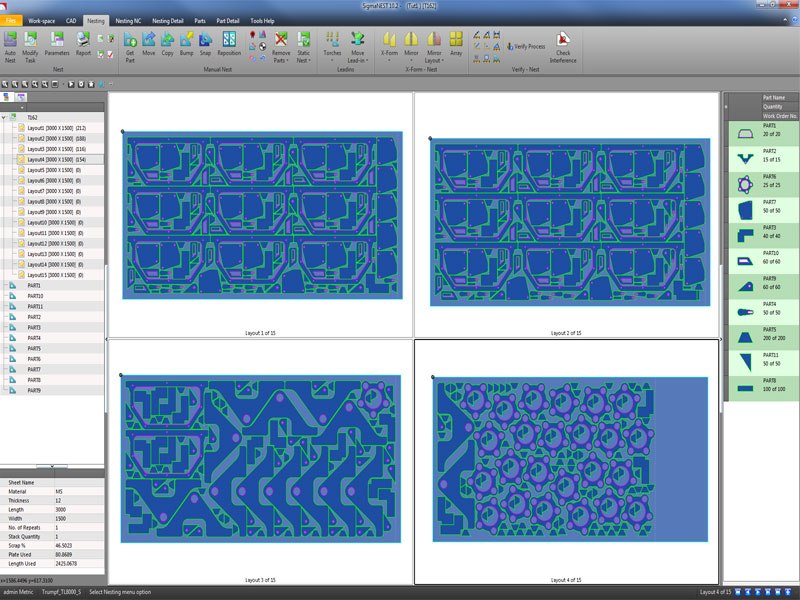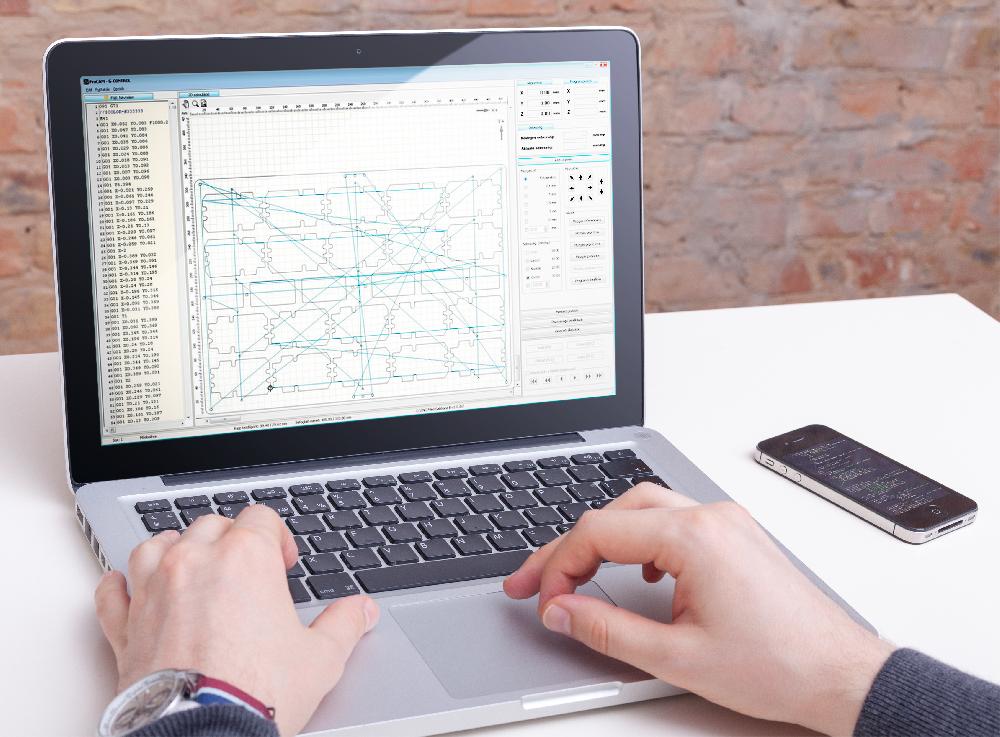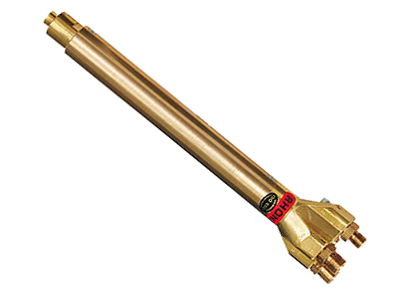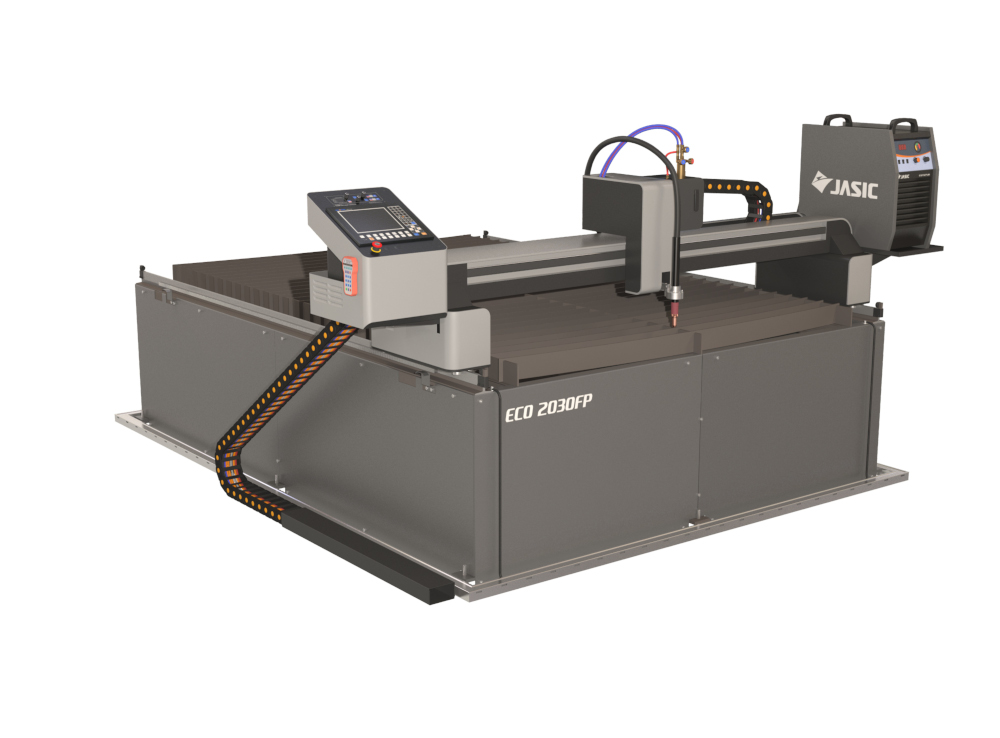About the technology |
Gases used for flame cutting |
|---|---|
|
The theoretical background of flame cutting: iron oxidizes rapidly at the temperature of white heat while releasing a significant amount of heat. The melting point of iron oxides (FeO and Fe3O4) is lower than that of pure iron, so the oxides generated at flame cutting melt quicker than pure iron. Certain types of steel can be cut into almost any shape by flame cutting. At flame cutting the line to be cut has to be preheated. After this the melted iron is cut by a direct stream of oxygen. The cutting process is the following: the work piece is preheated until the temperature of white heat at the starting point of the cutting then the cutting oxygen nozzle is turned on. The oxygen stream burns away the preheated material and the slag is removed by the pressure of the oxygen. The speed of the oxygen stream is higher than the sonic speed. The chemical reaction releases high amounts of energy which preheats the cutting surface. So in case of iron where the process of oxidizing is exothermic, the heat generated adds to the effect of the preheating flame. In case of other metals where the process is less exothermic, the preheating flame should be used at a higher volume. After starting the cutting the torch can be moved in the direction of the cutting with an even speed. Cutting can be manual or with the help of a ruler. It is also possible to make angled cuts. By flame cutting it is possible to cut not only straight lines but also shapes of any kind. Care should be taken that the starting point of the cutting is at the edge of the material at all times. In case of a work piece where the inner parts of the material should be removed the cutting should be started from that drill. Cutting tasks can also be executed manually or by using cutting machines. Most cutting machines can be mounted on a table with an option to move them in every direction. The shape to be cut is either drawn or a metal sample is made and the machine will cut the shape accordingly by the signal from its sensors. |
The five most commonly used fuel gases are acetylene, propane, MAPP (methylacetylene-propadiene), propylene and natural gas. The relative performance of the fuel gases in terms of pierce time, cutting speed and cut edge quality, is determined by the flame temperature and heat distribution within the inner and out flame cones. The cutting speed and cut edge quality are primarily determined by the purity of the oxygen stream. Thus, nozzle design plays a significant role in protecting the oxygen stream from air entrainment. The purity of oxygen should be at least 99.5%. A decrease in purity of 1% will typically reduce the cutting speed by 25% and increase the gas consumption by 25%. Naturally the cost of higher purity oxygen is more expensive but it will return in the long run. Flame cutting is an advantageous method for cutting steels with low carbon content. Preheating the material is more cost-effective. In case of cutting steel at 700-900 °C the cutting speed can be triple. |
Comparison Chart
| Cuttable materials |
Flame | Laser | Milling | Plasma | Waterjet |
|---|---|---|---|---|---|
| Mild steel | x | x | x | x | x |
| Carbon steel | x | x | x | x | |
| Stainless steel | x | x | x | ||
| Aluminium | x | x | x | x | |
| Titanium | x | x | x | x | |
| Chrome and cobalt alloy | x | x | x | ||
| Copper | x | x | x | x | |
| Bronze | x | x | x | ||
| Zink | x | x | x | ||
| Plexi | x | x | x | ||
| Poly carbonate | x | x | |||
| Foamed materials | x | x | x | ||
| PVC | x | x | |||
| PET | x | x | |||
| Other plastics | x | x | x | ||
| Rubber | x | ||||
| Wood | x | x | x | ||
| Marble, terazzo | x | x | |||
| Granite | x | ||||
| Glass | x |






